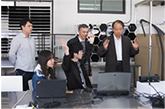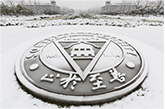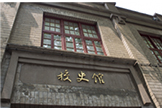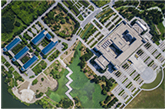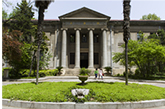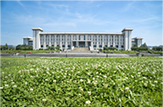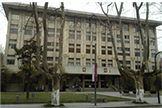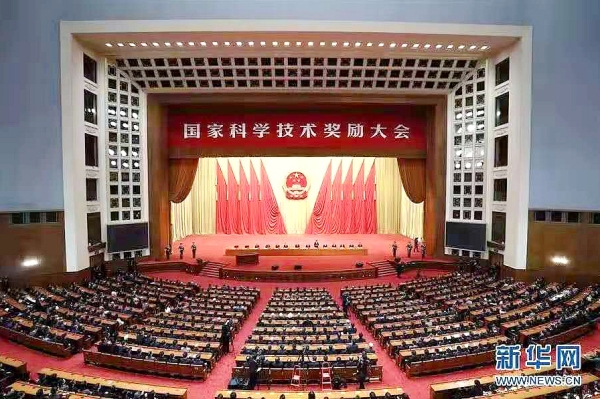
[Southeast University News Network, January 10] (Correspondent: Tang Tang; photographer: Xu Shiying) On Jan. 10, the 2019 National Science and Technology Award Conference kicked off in Beijing. Southeast University won a total of 7 National Science and Technology Awards, including 4 awards as the first completion unit.
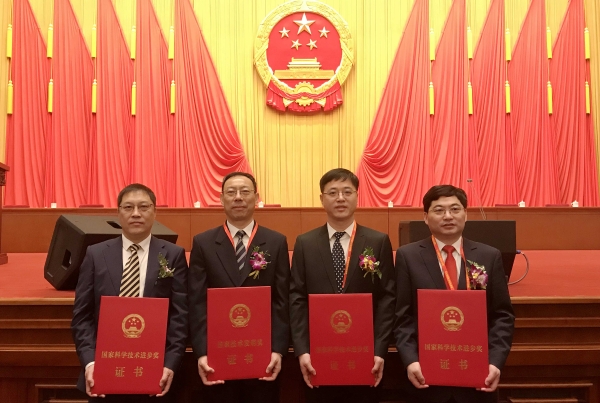
“Development and Application of Deep Foundation Self-Equilibrium Method for Bearing Capacity Test Technology”led by Prof. Gong Weiming’s team from the School of Civil Engineering of Southeast University won the second prize of the National Technological Invention Award. Prof. Gong Weiming took the initiative in proposing the concept of “equilibrium point” in 1996. After more than two decades, the team has established the self-equilibrium theory and its test method, developed a series of core loading equipment, and formed a set of self-equilibrium bearing capacity test technology. This technology has broken through the bottlenecks of the traditional static loading method which is characterized by small reaction force and low testing efficiency; besides, it has overcome the plight of lack of new deep foundation testing methods. Up to now, this technology has been used by more than 500 domestic and foreign enterprises in more than 12,000 projects in 32 provinces, autonomous regions, municipalities and special administrative regions and 15 countries along the “Belt and Road”, solved the technical difficulties in deep foundation bearing capacity testing as encountered in major projects, and created a number of world test records.
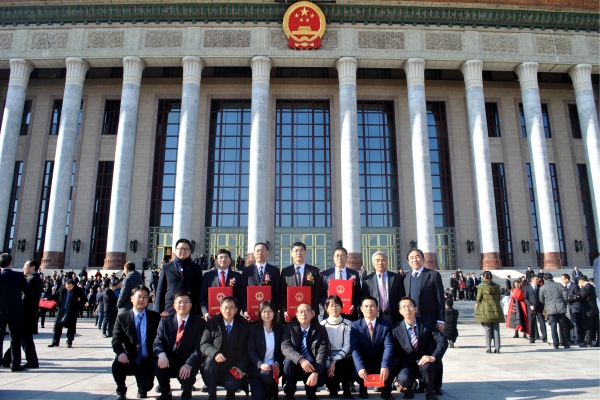
“Key Technology of Non-contact Detection and Evaluation and Efficient Reinforcement and Repair of Concrete Structures” led by Prof. Wu Gang’s team from the School of Civil Engineering of Southeast University won the second prize of the National Science and Technology Progress Award. After more than a decade, the project has made breakthroughs from three perspectives: the structural inspection and evaluation, the controllable and efficient reinforcement, and the reinforcement of complex conditions. It has formed the technical system of “accurate screening and diagnosis”, efficient and rapid treatment of “common diseases”, and effective and precise treatment of “difficult diseases”. This project pioneered a series of optical non-contact detection equipment and technologies, and solved the problems of rapid detection of large-scale structural deformation diseases and identification of structural diseases in muddy water, invented a series of new technologies for controllable reinforcement of critical areas and overall structural damage. In addition, it has created a new technical system for efficient reinforcement and repair of concrete structures under three complex and harsh conditions, including severe service environment, underwater, and uninterrupted traffic so as to achieve “economical and efficient” reinforcement under complex conditions. The project achievements have been used in more than 90% regions in China and play an important role in more than 500 major projects such as railways and highways.
“Key Technology of Modern Concrete Cracking Risk Assessment and Cracking Shrinkage Control”, led by Prof. Liu Jiaping from the School of Materials Science and Engineering of Southeast University, won the second prize of the National Science and Technology Progress Award. The concrete shrinkage-and-cracking is a major problem that has long plagued the engineering and hasn’t yet been effectively solved. In the past over two decades, the team has created a multi-factor coupled cracking risk quantitative assessment method to achieve the computability of modern concrete cracking risk and the designability of crack resistance. It has also invented 4 types of anti-cracking functional materials to reduce multiple shrinkage in different stages of concrete in a targeted and efficient manner, and has established a design of high crack-resistant concrete and a set of technologies for regulating crack resistance to achieve the controllability of shrinkage and cracking. The theoretical approach has been adopted by research institutions in more than 20 countries. The achievements have been applied to more than 100 major projects such as Lanzhou-Wulumuqi High-speed Railway, Hong Kong-Zhuhai-Macao tunnel immersed pipes, subway stations, etc., which have realized no visible crack in underground spaces, tunnels and large structures, and promoted the modern concrete crack control from passive repair to active prevention.
“Key Technology and Application of High-Performance MEMS Device Design and Manufacturing” led by Prof. Huang Qing’an from the School of Electronic Science and Engineering of Southeast University won the second prize the National Science and Technology Progress Award.
No. | Project Name | Main Contributors | Award Type |
1 | Development and Application of Deep Foundation Self-Equilibrium Method Bearing Capacity Test Technology | Gong weiming, Dai Guoliang, Yi Jiaoliang, Shi Feng, Xue Guoya and Gao Wensheng | The National Technological Invention Award |
2 | Key Technology of Non-contact Detection and Evaluation and Efficient Reinforcement and Repair of Concrete Structures | Wu Gang, He Xiaoyuan, Wei Yang, Jiang Jianbiao, Dou Yongzhi, Liu Zhao, Wang Chunlin, Xie Zhengyuan, Li Jintao and Tian Yongding | The National Science and Technology Progress Award |
3 | Key Technology of Modern Concrete Cracking Risk Assessment and Cracking Shrinkage Control | Liu Jiaping, Tian Qian, Wang Yujiang, Li Lei, Yao Ting, Li Hua, Zhang Shouzhi, Wang Wenbin, Wang Rui, Gao Nanxiao | The National Science and Technology Progress Award |
4 | Key Technology and Application of High-Performance MEMS Device Design and Manufacturing | Huang Qing’an, Zhou Zaifa, Nie Meng, Xu Bo, Xia Changfeng, Huang Jianqiu, Li Weihua, Tang Jieying, Zhu Zhen and Wang Lei | National Science and Technology Progress Award |
Award-winning Projects Completed by SEU as the First Completion Unit
Southeast University has always been known for “being famous with science and serving the country with talents”. SEUers, from generation to generation, have devoted themselves to scientific research and made outstanding contributions to the development and progress of China’s science and technology. Since the “Thirteenth Five-Year Plan” proposed in 2016, Southeast University has won 26 national science and technology awards, of which 16 were awarded as the first completion unit, ranking among the top universities in the country. The projects awarded with the first completion unit cover4 second prizes of the National Natural Science Award, 4 second prizes of the National Technological Invention Award, and 8 second prizes of the National Scientific and Technological Progress Award.
(Editor-in-charge: Tang Tang, reviewed by: Li Xiaonan)





